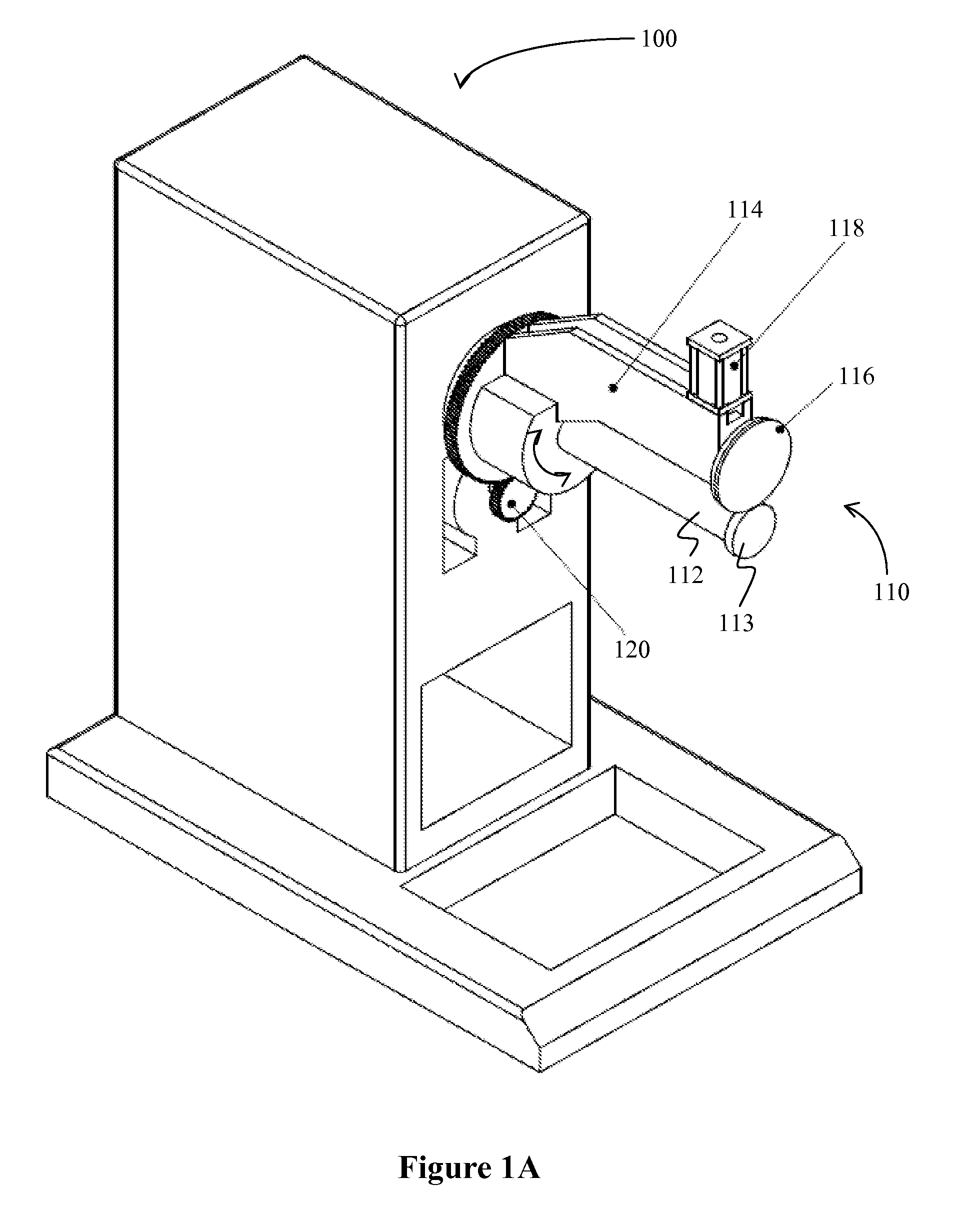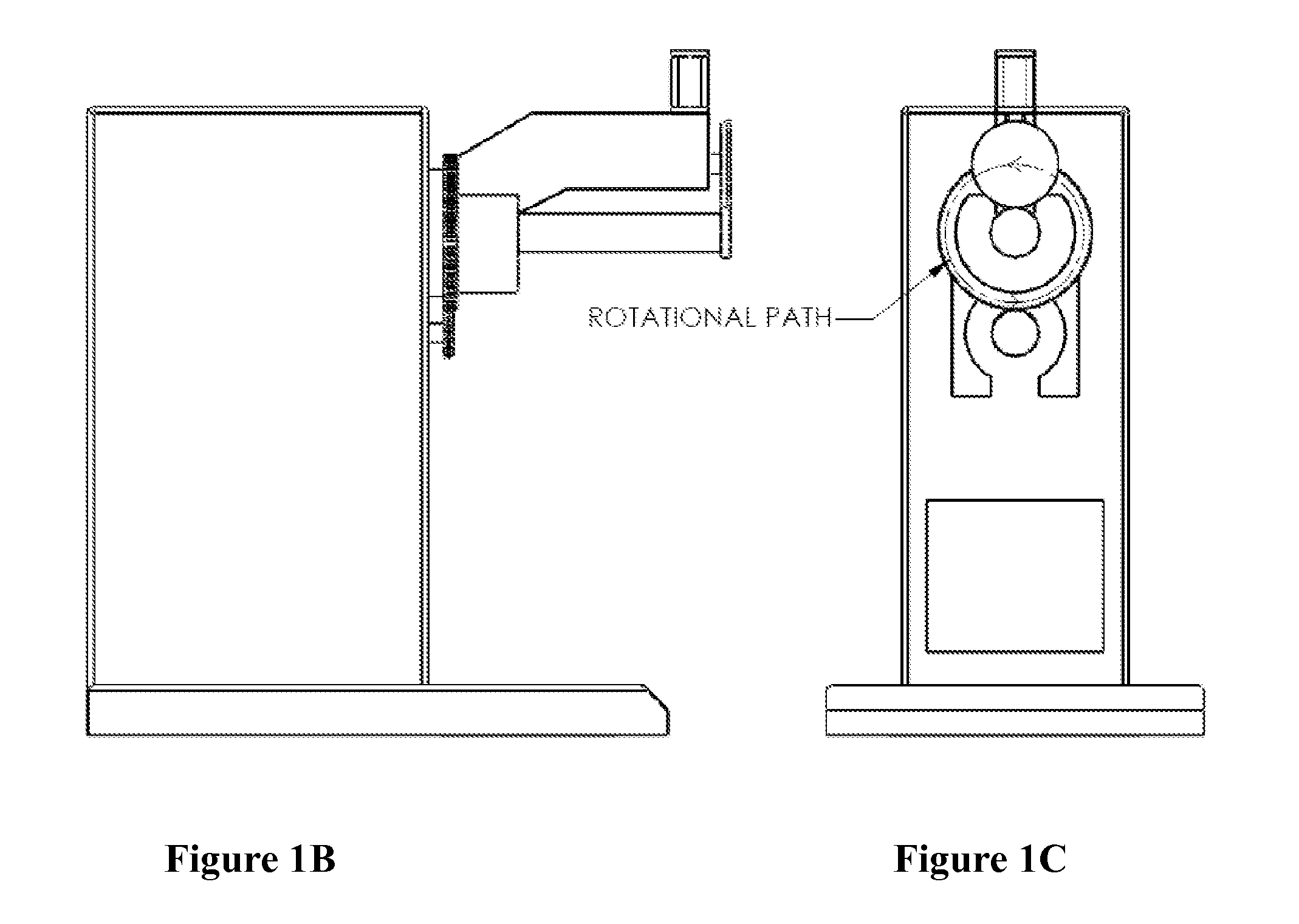Planetary Resistance Welding Device And Methods Therefor
a technology of resistance welding and planetary arc welding, which is applied in the field of welding, can solve the problems of not being able to fully automate orbital arc welding, requiring significant user experience, and not being able to quickly join relatively thin metal structures. , the effect of reducing the number of welding holes
- Summary
- Abstract
- Description
- Claims
- Application Information
AI Technical Summary
Benefits of technology
Problems solved by technology
Method used
Image
Examples
Embodiment Construction
[0018]The inventor has discovered that a thin metal structure can be resistance welded to the outer surface of a tubular or cylindrical metal tube in a conceptually straightforward manner using a relatively simple welding device. Most typically, contemplated resistance welding devices will include a static and central first element having a first electrode that retains and / or conductively contacts the tube or cylinder. A second element with a wheel-shaped electrode then moves circumferentially / orbitally about the first element while the second electrode contacts the work piece that is to be welded to the tube or cylinder.
[0019]An exemplary device is schematically shown in FIG. 1A, where resistance welding device 100 includes an electrode assembly 110, comprising a preferably static, non-rotating first element 112 (in shape of a mandrel) to which an electrode 113 (preferably circular) is coupled. It is further preferred that a free spinning wheel-shaped electrode 116 is mounted on th...
PUM
| Property | Measurement | Unit |
|---|---|---|
| resistance | aaaaa | aaaaa |
| shape | aaaaa | aaaaa |
| pressure | aaaaa | aaaaa |
Abstract
Description
Claims
Application Information
 Login to View More
Login to View More - R&D
- Intellectual Property
- Life Sciences
- Materials
- Tech Scout
- Unparalleled Data Quality
- Higher Quality Content
- 60% Fewer Hallucinations
Browse by: Latest US Patents, China's latest patents, Technical Efficacy Thesaurus, Application Domain, Technology Topic, Popular Technical Reports.
© 2025 PatSnap. All rights reserved.Legal|Privacy policy|Modern Slavery Act Transparency Statement|Sitemap|About US| Contact US: help@patsnap.com



